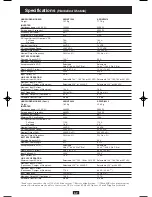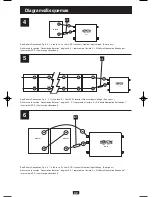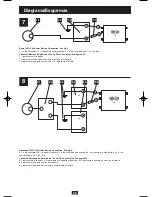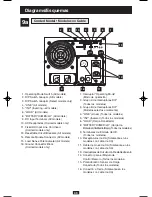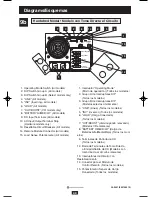
8
Mounting
(Optional)
(See Diagram 2, p. 36)
Battery Selection
Select a battery or system of batteries that will provide your APS with proper DC voltage and an
adequate amp hour capacity.* Select ‘Deep-Cycle’ batteries to enjoy optimum performance from
your APS. Batteries of either Wet-Cell (vented) or Gel-Cell/Absorbed Glass Mat (sealed)
construction are ideal. 6 Volt “golf-cart”, Marine Deep-Cycle or 8D Deep-Cycle batteries are also
acceptable.**
* Even though APS models are high-efficiency converters of electricity, their rated output capacities are limited by the
amp-hour size of the external batteries. ** You must set Configuration DIP Switch #1, Group A (Battery Type) to match the
type of batteries you connect or your batteries may be degraded or damaged over an extended period of time. See “APS
Configuration,” page 5 for more information.)
1. Add the Wattage Ratings of your connected equipment to determine the Total Wattage
Required.*
2. Divide the Total Wattage Required (from Step 1) by the battery voltage to determine the DC
Amperes Required.
3. Multiply the DC Amperes Required (from Step 2) by the number of hours you estimate will
pass without AC power before your battery can recharge to determine a Battery Amp-Hours
Required Rough Estimate.**
4. Compensate for inefficiency by multiplying your Battery Amp-Hour Required Rough Estimate
(from Step 3) by 1.2 to determine how many amp-hours of battery backup (from one or
several batteries) you should connect to your APS. Note that the Amp-Hour ratings of
batteries are usually given for a 20 hour discharge rate. Actual Amp-Hour capacities are less
when batteries are discharged at faster rates: batteries discharged in 55 minutes provide only
about 50% of their listed Amp-Hour ratings, while batteries discharged in 9 minutes provide
as little as 30% of their Amp-Hour ratings.
* The wattage rating is usually stated in the equipment’s manuals or on their nameplates. If your equipment is rated in
amperes, convert to watts by multiplying the ampere rating by your nominal AC line voltage (230). ** Your charging amps
multiplied by the charging hours must exceed the discharge amp-hours taken from the batteries between charges or you
will eventually run down your battery bank.
Horizontal mounting should be used for all vehicular applications. Due to their size and weight,
all APS PowerVerter systems in vehicles should be mounted on a rigid horizontal (not vertical)
surface, mounting plate or bracket before battery connection.User must supply all fasteners and
brackets and verify their suitability for use with the intended mounting surface. Turn your APS
PowerVerter and connected equipment OFF before mounting.
• Install two 8 mm (1/4 in.) fasteners (A) into a rigid horizontal surface using the
measurements in the diagram. Leave the heads of fasteners raised slightly above the
surface in order to engage the slots in the APS’s feet.
• Slide PowerVerter forward to fully engage the fasteners in the APS’s feet. Install two
8 mm (1/4 in.) fasteners (B) into the surface, through the slots in the APS’s two
unsecured feet. Tighten the screws to secure the APS in position.
Selecting Battery Type
Selecting Battery Amp Hour Capacity
200106010 230V APS Owners Manual.qxd 1/3/02 5:18 PM Page 8

















